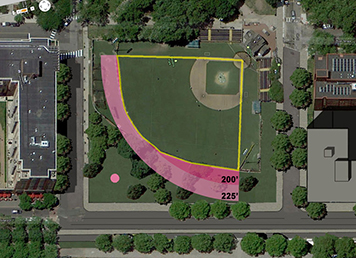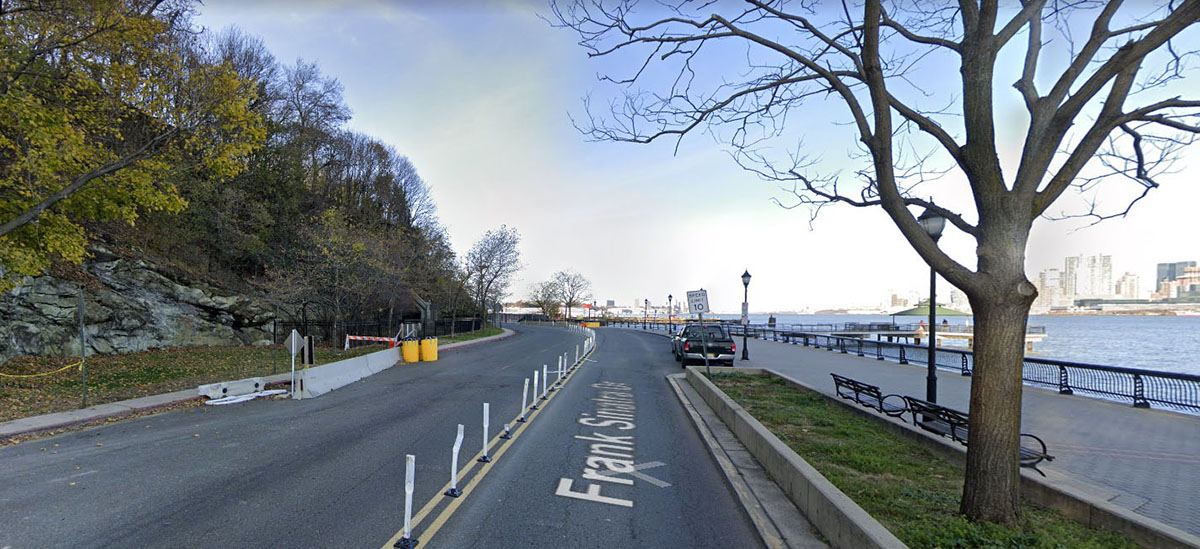The stellar qualities of Hoboken’s South Waterfront should be extended north from 4th to 11th
The City of Hoboken has received two grants totalling $1.2 million to reconstruct Sinatra Drive and add a protected bicycle pathway from 4th to 11th Streets. In December the City hired Kimley-Horn, an engineering firm, to finalize a design and oversee its construction.
For this Sinatra Drive project to be successful, the City should commit additional funds to solve the many issues along this long-neglected ¾ mile stretch of Hoboken’s central waterfront. In the 1990s, FBW was instrumental in creating the park and design at the South Waterfront from Newark to 4th Street. For over 20 years, people have enjoyed the tree-lined South Waterfront with its generous swaths of public parkland, extra-wide walkway and protected bicycle pathway. The award-winning South Waterfront has set a standard of excellence that the City should strive to replicate from 4th to 11th Streets.
The most challenging part of the Sinatra Drive project exists between 4th and 5th Street. During World War I, American troops embarked for the war from the shipping ports at Hoboken’s southern waterfront. The expansion of rail lines running to these ports explains the incursion into Stevens Park, now constituting the overly-wide, curved route for Sinatra Drive between 4th and 5th Streets.
The Stevens family deeded the 3-acre site for Hudson Square (Stevens Park) to the City in the 1800s which is shown on the City’s current tax map and designated by the City as an historic site. It is therefore in the public interest for the City to adopt a long-term vision for this project, with the goal of restoring the official metes and bounds for Stevens park. In doing so, a number of other problems between 4th and 5th can also be solved, as follows:
- The open space, currently usurped by a convoluted street pattern, can be made into accessible and usable public parkland.
- Making T-intersections along Sinatra Drive at 4th and 5th Streets provides for safer streets, corrects the grid and leads people directly to the waterfront.
- Sinatra Drive can be aligned in a straight line heading north.
- The protected bike path at the South Waterfront can also be continued due north from its current route.
- Narrower traffic lanes (The National Association of City Transportation Officials recommends 10 feet) will force traffic to slow down.
- The two-way bike path can be widened beyond the minimum 8’ foot requirement.
- The Little League field can be expanded, making the ballfield regulation-size.
- The World War II memorial can be greatly improved and situated nearby in a more dignified, prominent setting.
Combined with the completion of the parks at Union Dry Dock, the Monarch Pier, and Weehawken Cove, Hoboken has an opportunity to create a truly exceptional, green waterfront and a lasting legacy for generations to come.
Related Links
With rows of shade trees, Hoboken’s South Waterfront is a model for trees in urban design
Col. Stevens vision for Hoboken still valid 200 years later
Editorial: A Once-in-a-century Opportunity
Plan for the Hoboken Waterfont
Hoboken’s first parks established in 1804
Roots over the river



